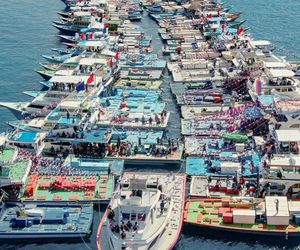Environmental sustainability: A tale of two presidents
The hope of social media activists that an Environment Impact Assessment could save the Kulhudhufushi mangrove from destruction to build an airport is misplaced, writes environmental scientist Ibrahim Mohamed.

23 Oct 2017, 9:00 AM
Just a few days ago, President Abdulla Yameen referred to the Equatorial Convention Centre in Addu City as an “economic crime” committed by former President Mohamed Nasheed. The very next day, local media was flooded with the news of the construction of an airport on Kulhudhufushi to fulfil one of Yameen’s long overdue pledges.
The irony is how the ECC becomes an economic misdemeanour and a toxic asset, while Kulhudhufushi airport becomes a material blessing of economic progress. What does environmental sustainability mean when it comes to how we define economic growth?
When I was in my year 12 at school, Mezzo’s debut album Guguri was released and the song “Miyoh Dhuniye” (This World) about searching for dolphins or terns and saving rhinos made me wonder whether the environment was about saving rhinos. However, after becoming an environmental social science academic, I realised that it is not about the rhinos anymore but humans and the place we live and want to raise our future generations. It is about sustainability and making our lives and that of our future generations better, by utilising our resources efficiently and by balancing the social and environmental benefits with economic growth.
When the ECC was about to be built by reclaiming the Maakilhi freshwater wetland in Hithadhoo, I was working in the environment ministry. During the construction of the ECC, I visited the site and saw more than a million cubic feet of swamp soil being excavated and the area filled with sand from the lagoon of Hithadhoo.
Become a member
Get full access to our archive and personalise your experience.
Already a member?
Discussion
No comments yet. Be the first to share your thoughts!
No comments yet. Be the first to join the conversation!
Join the Conversation
Sign in to share your thoughts under an alias and take part in the discussion. Independent journalism thrives on open, respectful debate — your voice matters.




